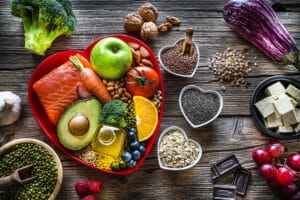Think about pure delicious golden butter that comes from grass fed, pastured, contented cows. Beautiful deep yellow butter that can nourish and protect us from disease if we would only give it a chance! It’s too bad all we have today is attacked, maligned and mistreated butter. Butter has been the whipping child of the diet dictators and the food police for decades. But it’s time to stop convicting butter of terrible imagined crimes. It’s time to restore butter to its proper place on our tables and in our bodies.
The negativity in the U.S. about butter comes as a surprise to the many people around the globe who have valued butter for its life-sustaining properties throughout history. In India, a form of clarified butter known as ghee has been used as a healing food for more than 3000 years. Ghee is a symbol of purity and a worthy offering in religious ceremonies. The Bible tells of Abraham setting butter before angels who appeared to him. For millennia, people around the world have prized butter for its health benefits.
In the 1930’s Dr. Weston Price, a dentist who sought the answer for preventing tooth decay, studied native diets in fourteen different cultures around the world. He found that butter was a staple in the diets of isolated, non-industrialized peoples who displayed supreme health. Children who were raised on diets with butter as a central ingredient grew to be robust, sturdy and free of tooth decay. According to information published by the Weston Price Foundation, Swiss villagers placed a bowl of butter on their church altars, set a wick in it, and let it burn throughout the year as a sign of the divinity of the butter.
How did butter become our enemy instead of our friend?
Two opposing forces were at work in America following World War II. Women returned to being full time mothers and family caretakers, igniting an interest in health and nutrition. And corporations had to retool from the war effort and find something to sell to these women. Food technology became the obvious answer. In order to reap huge profits from the products of food technology, a stake had to be driven through the hearts of the tried and true foods that people had relied on for generations.
Disinformation ad campaigns were launched to assert that naturally saturated fats from animal sources were the cause of disease. The idea of margarine was sold to physicians much like drugs are sold today. In their ignorance physicians told their patients to stop eating butter and start eating margarine. Soon everyone ‘knew’ that margarine was better for health than butter.
Once an idea becomes popular opinion, it tends to persist even in the face of evidence to the contrary. Today, butter is still viewed as our enemy in spite of the fact that hundreds of highly motivated studies have been unable to confirm a link between butter and disease.
Does butter really cause disease? Quite the contrary. Butter actually protects us against many of the diseases on the rise today.
The latest research proves butter is our friend
High-fat dairy foods contain many anti-cancer factors including conjugated linoleic acid (CLA). Scientists in Sweden have found that women who consumed four or more servings of high-fat dairy foods daily, including butter, reduced their risk of colorectal cancer by a whopping 41% compared with the women who consumed less than 1 serving daily.
Scientists in Italy studied 7119 breast cancer cases over an almost nine year time span, investigating the relationship of dairy product consumption with breast cancer risk. They found no association between breast cancer risk and the consumption of dairy products including butter. This is consistent with findings from other experiments with a variety of fats which have shown that saturated fats do not cause tumors or cancer.
In his book What Your Doctor May Not Tell You About Breast Cancer (2002), Dr. John Lee from the Harvard Medical School says, “the majority of studies show absolutely no connection between saturated fat intake and breast cancer risk,” though we continue to be told by ‘experts’ to avoid saturated fats if we want to be healthy.
The association between intake from 21 food and beverage groups and the subsequent 5-year difference in waist circumference was studied by scientists in Denmark. (3) Their population consisted of 22,570 women, and 20,126 men with baseline and follow up waist circumferences, baseline diet and body mass index. They found that women who consumed butter tended to have less gain in waist measurement than those who did not.
The following additional research summaries come from Why Butter is Better, the brilliant work of Mary G. Enig, Ph.D., and Sally Fallon, Director of the Weston Price Foundation, writing for the foundation:
Butter’s nutrients are heart protective
Although heart disease was seldom seen a hundred years ago, today it is the number one killer. During this time period, the consumption of butter has decreased from eighteen pounds per person to less than four, and the consumption of vegetable oils has increased exponentially. Butter is rich in nutrients that protect the heart. First among them is the antioxidant Vitamin A, needed for health of the thyroid and adrenal glands, which help maintain proper functioning of the whole cardiovascular system. Butter is the best and most readily absorbed source of Vitamin A. Butter also contains lecithin, a substance needed for the proper assimilation and metabolism of cholesterol and other fat constituents. It contains antioxidant Vitamin E and selenium, which are protective of the cardiovascular system.
And what about cholesterol, that substance the medical establishment says is out to get us? Cholesterol is actually necessary for proper cell functioning and is a powerful antioxidant that protects against damaged and rancid fats such is those generated by highly processed vegetable oils.
Butter is a powerful cancer fighter
Long chain fatty acids found in polyunsaturated oils, butter substitutes, and hydrogenated fats suppress the immune system, the number one defense against cancer. Short and medium chain fatty acids found in butter have immune system strengthening properties. These medium chain fatty acids are also more easily absorbed, digested, and utilized as energy than are long chain fatty acids.
Short and medium fatty acid chains have strong anti-tumor effects, particularly 12-carbon lauric acid, a medium chain fatty acid not found in other animal fats. Although lauric acid may be obtained from coconut oil, getting it from butterfat more easily fits in with typical food choices.
The anti-fungal and anti-tumor effects of butyric acid, a short chain fatty acid, are unique to butter. Butyric acid is an energy source for the cells lining the colon, where it is plays a part in development and maintenance. It reduces chronic inflammation of the colon and correlates with decreased colon cancer risk. In people with compromised immune systems, undifferentiated cell growth can be inhibited by butyric acid.
Cell walls are made of cholesterol, protein, and saturated and monounsaturated fats. Our cells contain little in the way of polyunsaturated fats. The job of cell walls is to admit from the blood the various nutrients that our cells need, while refusing admittance to harmful pathogens. A diet high in polyunsaturated fatty acids changes the constituency of cholesterol and body fat. Cell walls become softer and unstable, losing their ability to regulate what is allowed into the cell. A diet high in butter helps maintain cell wall integrity.
CLA, present in butter in large amounts, has been shown to be an anti-carcinogen in several animal studies. CLA has also been shown to inhibit the body’s mechanism for storing fat and results in the body’s utilization of fatty reserves for energy rather than for creating obesity.
The fat soluble antioxidant vitamins in butter, as well as selenium and cholesterol, are also protective against cancer.
Butter is loaded with the mainstays of nutrition
Butter is one of the very few foods that naturally contain Vitamin D, essential to the proper absorption of calcium and therefore necessary for proper bone growth and the development of healthy teeth. Enig and Fallon suspect the high rates of osteoporosis in milk drinking Western nations may be due to people being conditioned to buy skim or low fat milk rather than the whole milk that contains Vitamin D in its fat.
Butter is one of the few foods that supply an adequate amount of iodine in a highly absorbable form. Iodine is critical for proper thyroid functioning and breast cancer protection.
Components of butterfat are protective against gastro-intestinal infection. Children who drink skim milk have diarrhea rates three to five times higher than children who drink whole milk. Butter’s short and medium chain fatty acids have a strong anti-fungal effect and play a role in the treatment of candida overgrowth.
Butter contains small but nearly equal amounts of omega-3 and omega-6 essential fatty acids. This excellent balance between linoleic and linolenic fatty acids helps prevent the problems associated with excessive consumption of omega-6 fatty acids.
Butter aids weight loss
Yes, you read it here. Butter is an agent of weight loss, not weight gain. Fat tissue is composed mainly of longer chain fatty acids such as those found in polyunsaturated oils, olive oil, and carbohydrates. The long chains require a lot of bile acids and many digestive steps to be broken down into small units that can be passed into the bloodstream. Once in the bloodstream, they are absorbed by fat cells and stored as fat. Medium chain fatty acids, however, are more water soluble and are able to enter the bloodstream quicker because of their short lengths. Once in the bloodstream, they are transported directly into the liver. Thus they are an immediate source of energy and only a tiny percent is converted into body fat.
CLA has been shown to inhibit lipoprotein lipase, an enzyme that breaks down fat in the blood so that fat cell uptake, or body fat accumulation, can occur. The inhabitation of lipoprotein lipase results in reduced fat deposits.
CLA also increases hormone sensitive lipase activity, breaking down fat stored in fat cells in the body. Fatty acids stored in the body are returned to the blood stream to be used as an energy source for muscle cells.
Medium chain fatty acids have become a favorite energy source for many athletes who require a quick source of energy. Unlike carbohydrates which may cause a rapid increase in insulin production, resulting in weight gain and other health problems, medium chain fatty acids do not cause weight gain because they stimulate thermogenesis (the process in which the body generates energy or heat by increasing its normal metabolic, fat-burning rate).
Butter spurs optimal growth and development in children
Several factors in butter help ensure that children grow and thrive. According to the findings of Dr. Price, individuals receiving optimal Vitamin A from the time of conception have broad handsome faces, strong straight teeth, and excellent bone structure. Vitamin A also plays a role in hormone production and the development of the sex characteristics.
Activator X, discovered by Dr. Price, is essential for optimum growth. It is present only in butterfat from pastured cows. Cholesterol found in butterfat is important in the development of the brain and nervous system. Breast milk is high in cholesterol and more than half of its calories come from butter fat. Although low-fat diets have been linked to failure to thrive in children, they are often recommended by pediatricians.
Who benefits from the continued denigration of butter?
Study after study has shown us that hydrogenated fat, also known as trans fat, is a chief culprit in the escalation of cancer and heart disease. Some states have even passed laws against the use of transfats in cooking. Yet nutritionists continue to tell us to avoid butter at all costs. Why? Because there are many who benefit from the battering of butter, including established medicine, big pharma, large corporate farms, food technologists and processors, and agribusiness. Products of food technology that serve the function of butter but provide none of its benefits are created, manufactured, packaged, advertised and sold at high prices while the cost of producing them is quite small, allowing butter batterers the opportunity to reap huge profits at the public’s expense.




